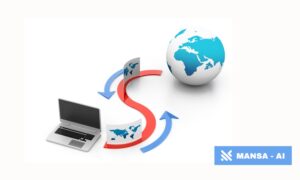There can be no doubt that data is the life blood in today’s high-octane high-speed environment of artificial intelligence (AI). The capability of a machine learning framework is more or less directly proportional to the credibility and the heterogeneity of the data fed into the training processes. But one of the most time-consuming and labor-intensive processes still stays the collection and annotation of high-quality datasets. Meet alaya ai or as we like to call it, the revolutionizing new platform for putting together data sourcing, labeling, and application.
Whether you are industry professionals, researchers ourselves in the field of artificial intelligence, or working on the next machine learning model or the data strategy of your company or enterprise, knowing about alaya ai could be an advantage. We are going to look at the 7 ways in which alaya ai is revolutionizing the data gathering and annotation industry.
1. Crowdsourcing Through a Web3-Enabled Model
Another valuable characteristic about alaya ai lies in the way it harnesses Web3 to manage crowd sourcing of data. Unlike other annotation tools, alaya ai builds upon blockchain technologies that allow people from all over the world to contribute to data tasks with proper control, transparency, and payments. The consumers are rewarded for their contributions through the utilization of cryptocurrencies that will be facilitated by the smart contracts.
This makes the data collection process efficient and at the same time very much sustainable and fun for the people from different corners of the world. It’s a win-win: Companies gain quality data needed while individuals that participate in the surveys receive fair remuneration.
2. Gamification for High-Quality Annotations
Annotation fatigue is a well-known problem in AI projects. When humans are tasked with labeling vast datasets, accuracy tends to decline over time. Alaya ai has solved this problem with an innovative approach to gamification.
The platform uses engaging game-like elements such as badges, ranks, challenges, and performance-based rewards to keep contributors motivated. This significantly boosts user engagement and the overall quality of annotations. As a result, businesses using alaya ai can expect faster turnarounds and more reliable datasets.
3. Ethical and Transparent Data Sourcing
What matters most in today’s world full of AI and top-notch significant privacy concerns is to understand the origins of the data. Hence, to prevent any form of unethical sourcing this AI has a blockchain journal that records all the actions of the workers, all users, and all data flows. It helps make its users, researchers, and regulators have confidence in the results that it presents.
Healthcare, finance business, and government, and other industries where the protection of data is crucial will welcome the fact that the data set has been collected by alaya ai and labeled under very scrupulous conditions that follow strict ethical standards.
4. Diverse and Global Workforce for Bias Reduction
The other important factor that is usually a challenge when dealing with machine learning datasets is bias. If you find data from a small group of a specific ethnicity, then the AI model trained from it is likely to be wrong or biased. Alaya ai solves this through opening the door to a global and diverse talent pool.
Alaya ai also collects rich data from different countries, cultures, ages and so on user demographics. This leads to broad AI models capturing more representative and fairly applicable across a large user population.
5. AI-Powered Quality Control Mechanisms
To avoid dependency on people when it comes to annotations, alaya ai has other tools at its disposal as well. It incorporates a machine learning layer that can identify potential input inconsistencies and mark them for manual review as well as automate part of the review process.
For example, if two annotators have completely different image classification, alaya can check at what rate are both annotators correct, complete the task involving the third human captcher or suggest the image classification itself at different probability using its AI. This AI-assisted quality control ensures data integrity without sacrificing speed.
6. Flexible Integration With AI/ML Pipelines
The alaya ai is created to integrate effortlessly into existing AI development processes. Regardless of whether you prefer TensorFlow, PyTorch, or any other infrastructure, you can also import and export labeled data directly from alaya’s user interface or through the use of its API.
Moreover, the platform supports a variety of annotation types including:
- Image classification
- Object detection
- Semantic segmentation
- Text annotation (NER, sentiment analysis, etc.)
- Audio labeling
This flexibility makes it suitable for diverse industries including automotive (for autonomous driving data), healthcare (for medical imaging), and e-commerce (for product categorization).
7. Incentivized Data Sharing for Enterprises and Developers
Unlike other platforms where data often gets siloed, alaya ai fosters a collaborative data economy. Developers and organizations can share datasets on the platform in return for rewards, tokens, or reputation points.
This not only helps in building larger and more comprehensive datasets but also supports a transparent data marketplace. Enterprises can monetize underutilized data assets while contributing to the global AI research community.
Why Alaya AI Matters in the Modern AI Landscape
With the rapid rise in demand for smarter AI applications from ChatGPT-style bots to self-driving cars the need for better data annotation tools has never been greater. Traditional tools are either too expensive, too slow, or lack the ability to scale.
Alaya ai stands out because it combines:
- The scalability of crowdsourcing
- The integrity of blockchain
- The engagement of gamification
- The precision of AI-enhanced validation
This multi-pronged approach makes it a future-ready platform that supports the development of more accurate, ethical, and high-performing AI systems.
Final Thoughts
The future of AI development is not going to be the result of improved algorithms; it will be the result of improved data. And companies such as Alaya AI, are spearheading that revolution. Through the integration of Web3, gamification, and the involvement of a global workforce, alaya ai turns the pain point of data collection into a rewarding, ethical, and streamlined exercise.
As an AI researcher, data scientist, or tech entrepreneur interested in automating the data pipeline without compromising on its quality, ethics, this could be the time to check out Alaya AI.
Frequently Asked Questions (FAQ’s)
Q1: Is alaya ai suitable for small startups?
Yes. alaya ai offers flexible pricing and task management that suits both startups and large enterprises.
Q2: What types of data can I collect and label with alaya ai?
The platform supports image, text, audio, and video data ideal for computer vision, NLP, and more.
Q3: How do contributors get rewarded?
Users earn crypto tokens based on their task accuracy, speed, and consistency, governed by smart contracts.
Q4: Is the data collected compliant with GDPR or other regulations?
Yes. Alaya ai prioritizes transparency and compliance, making it a great choice for regulated industries.



































